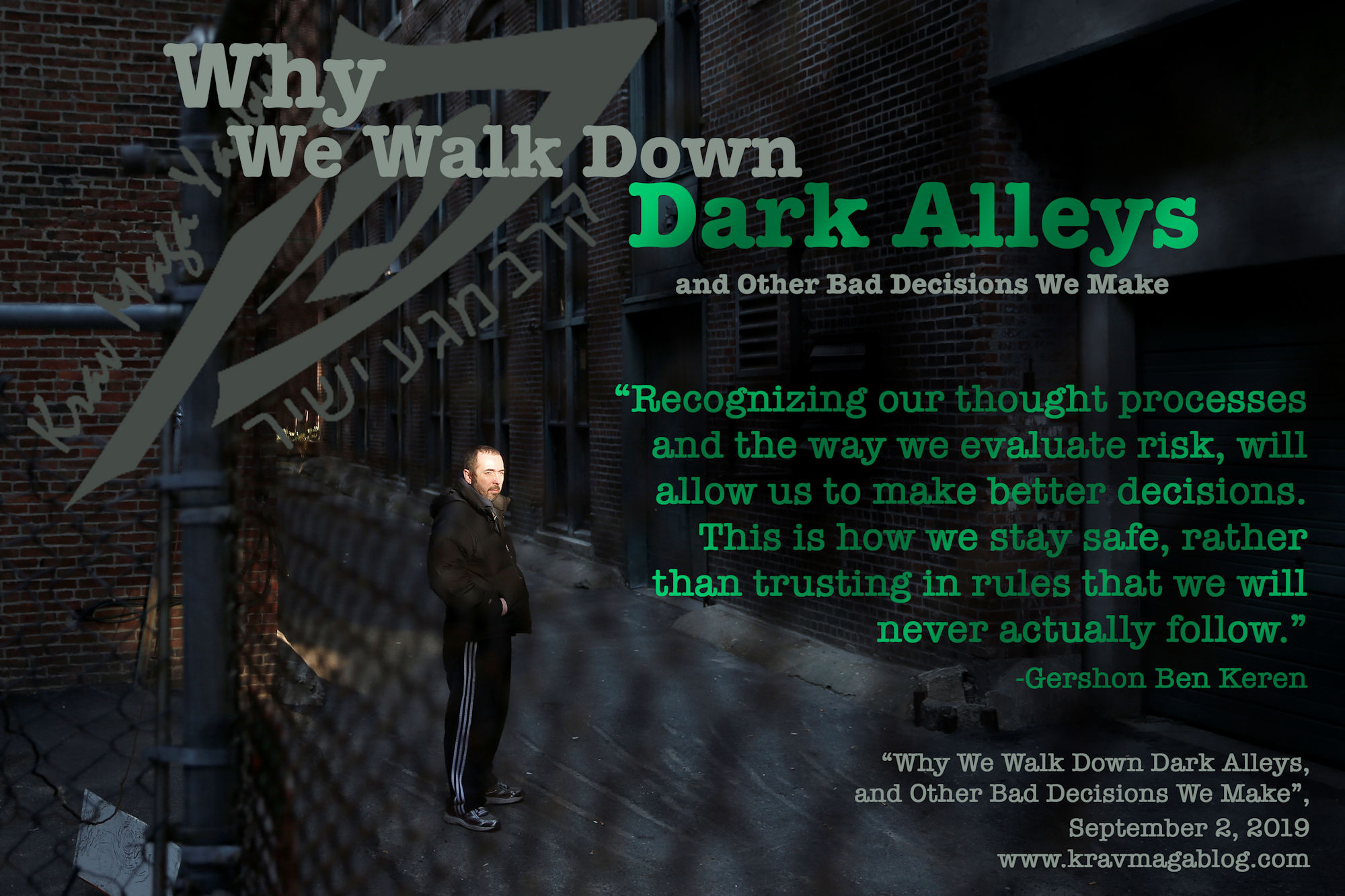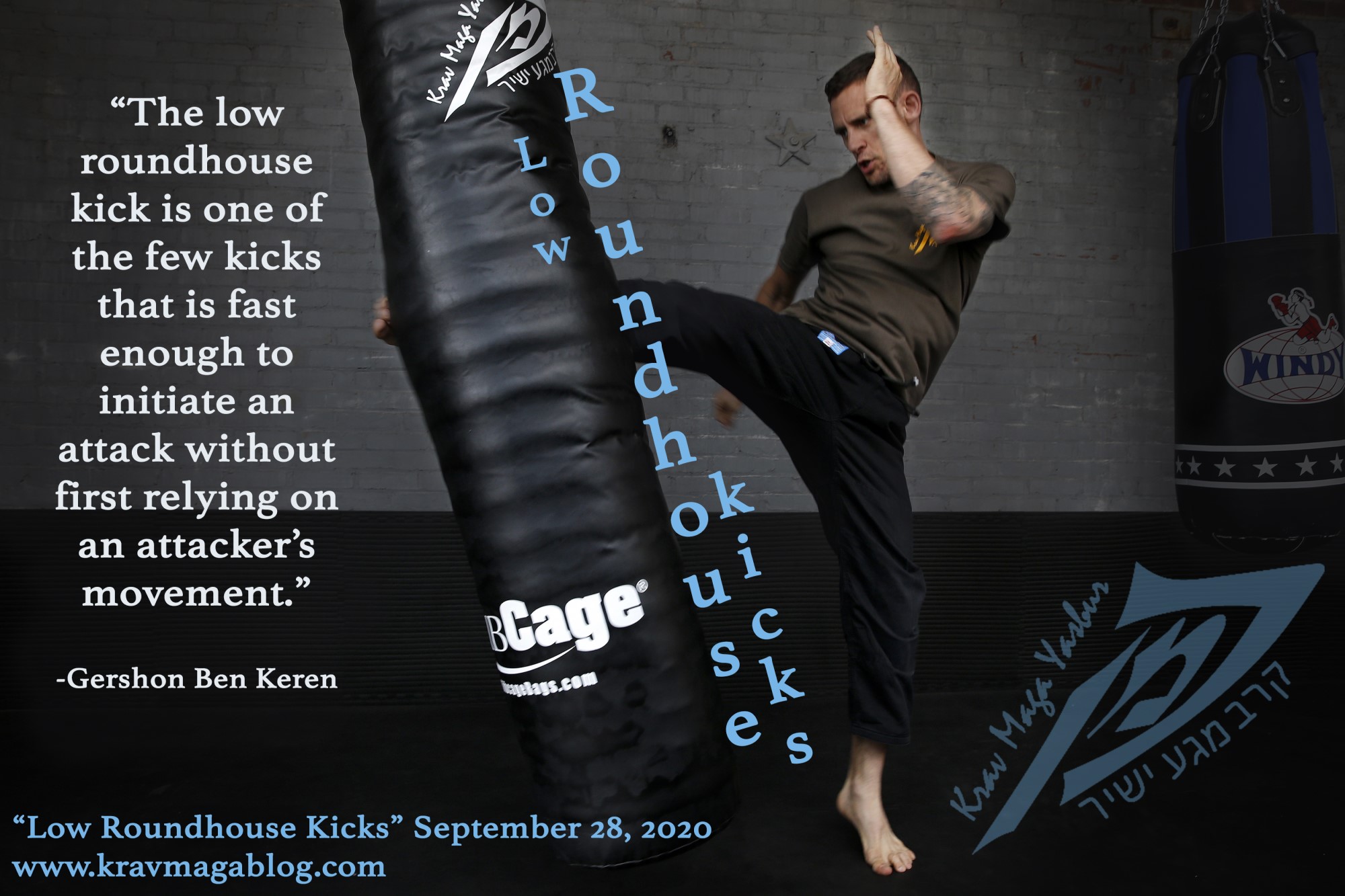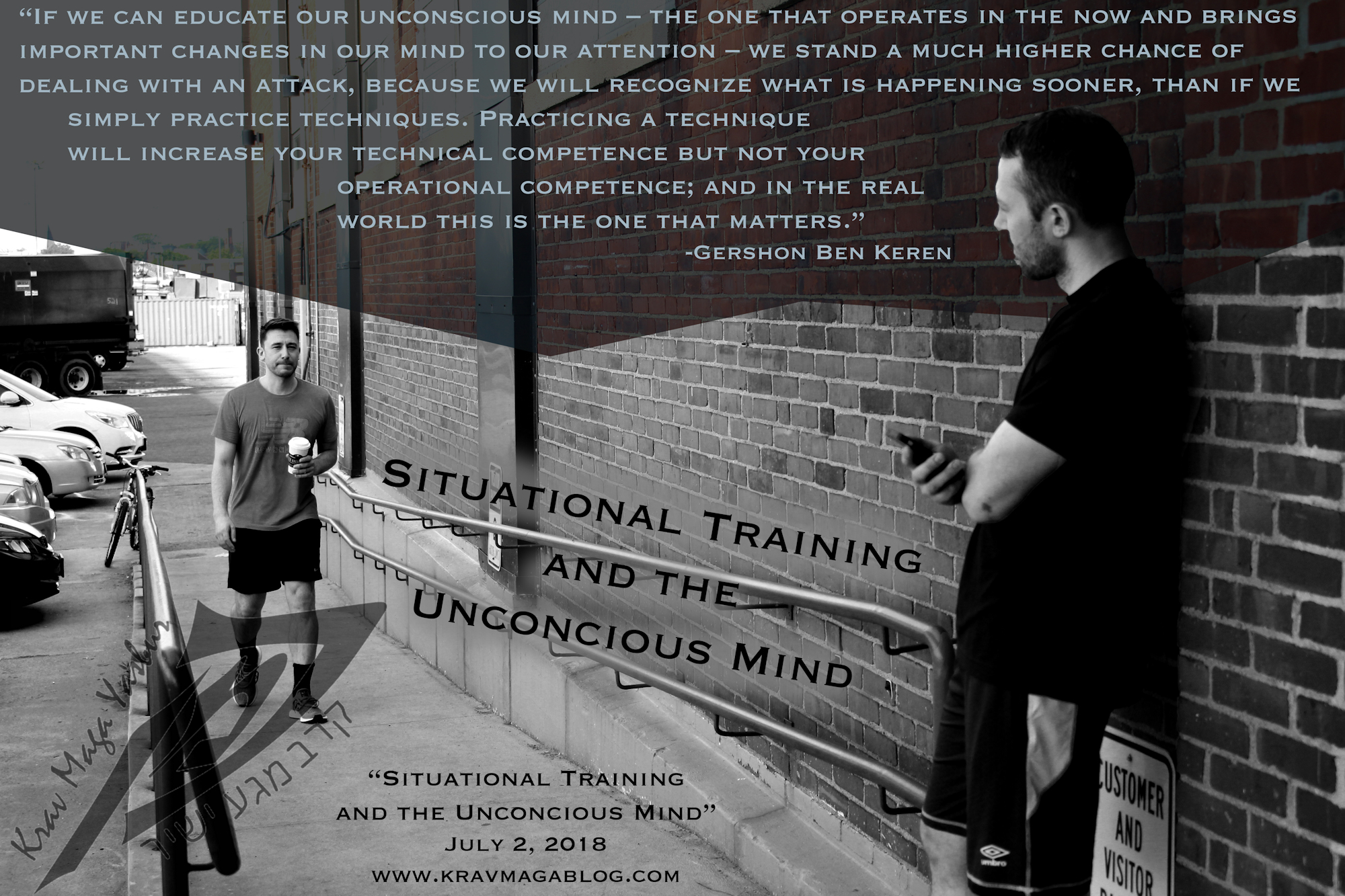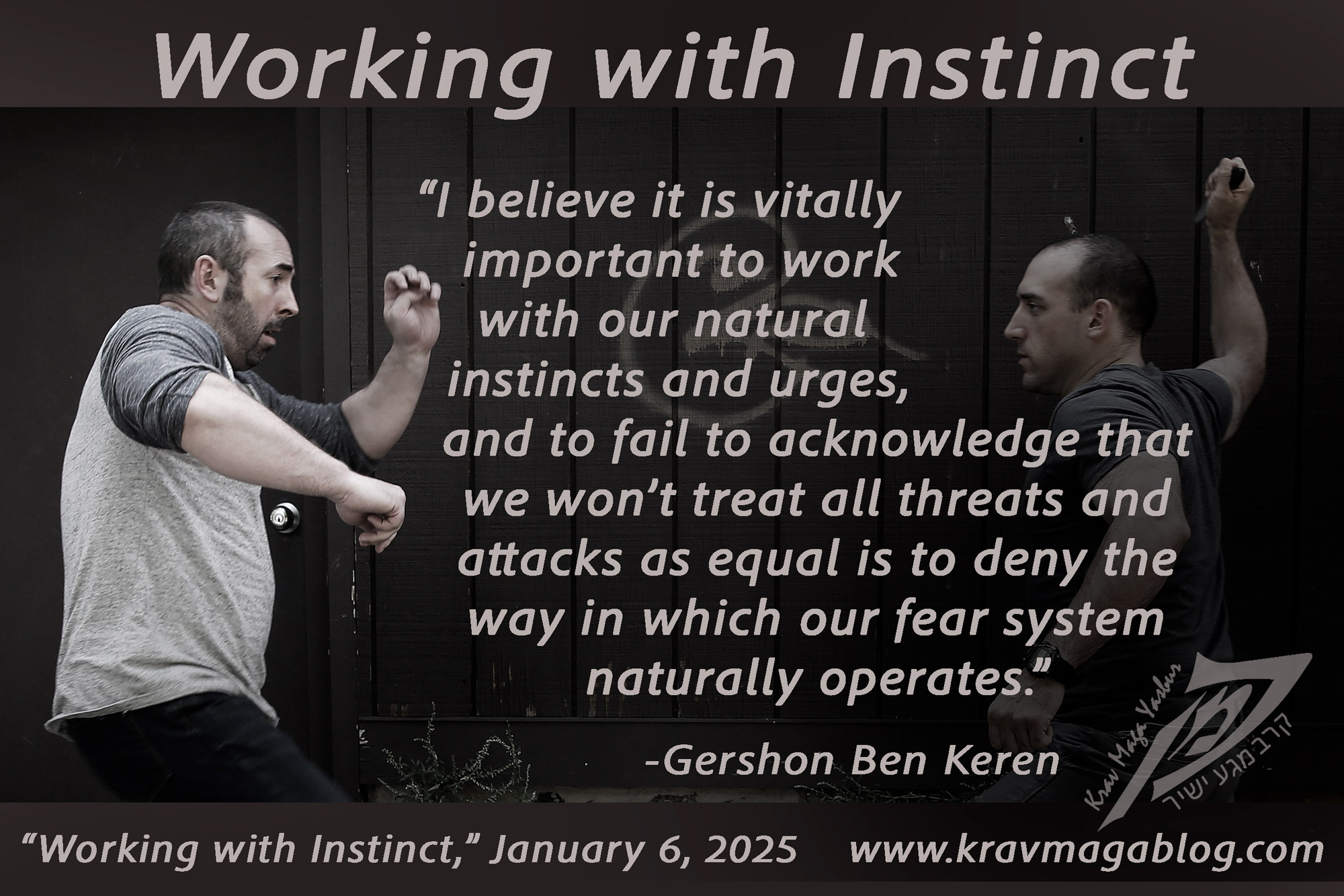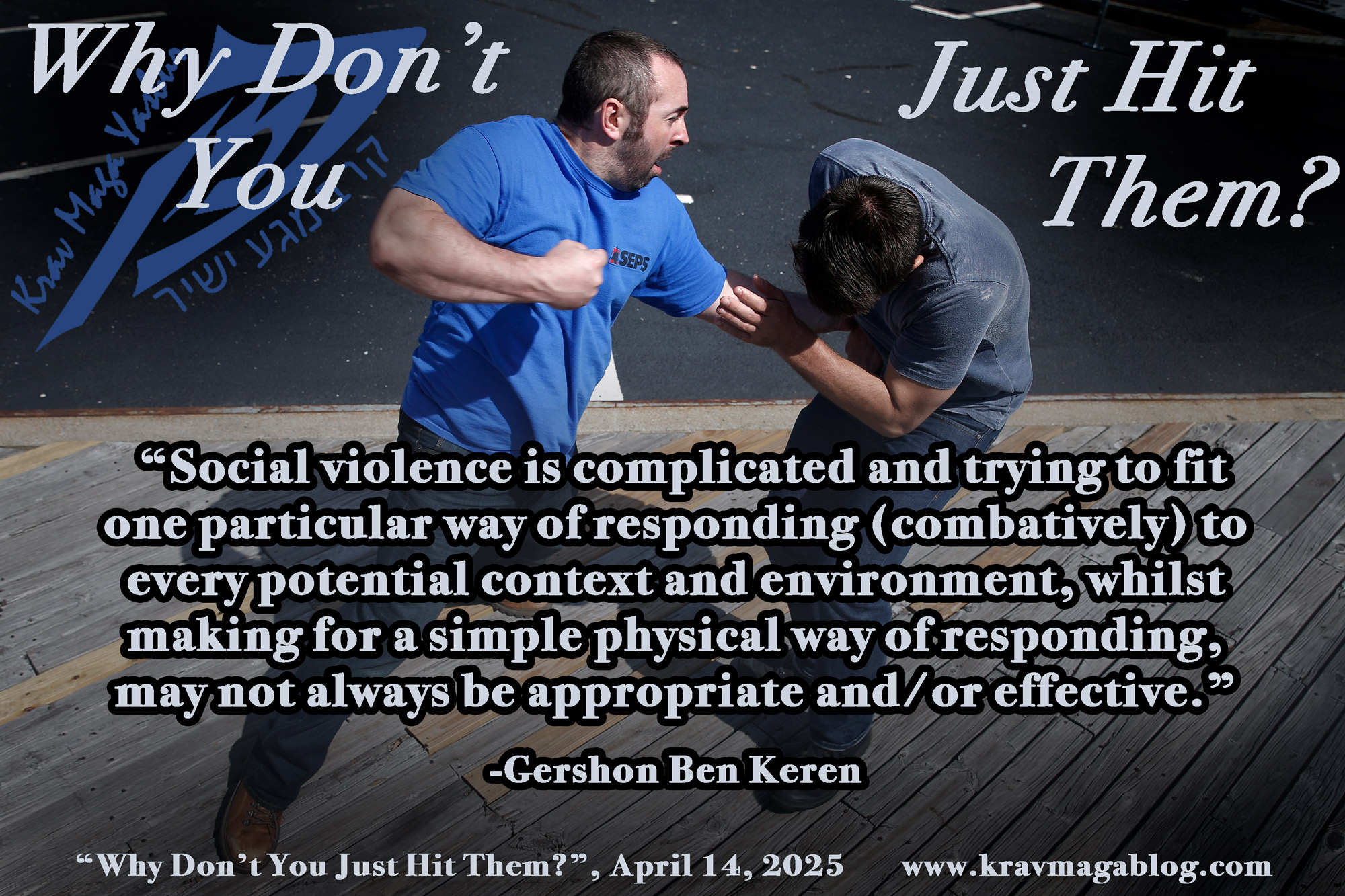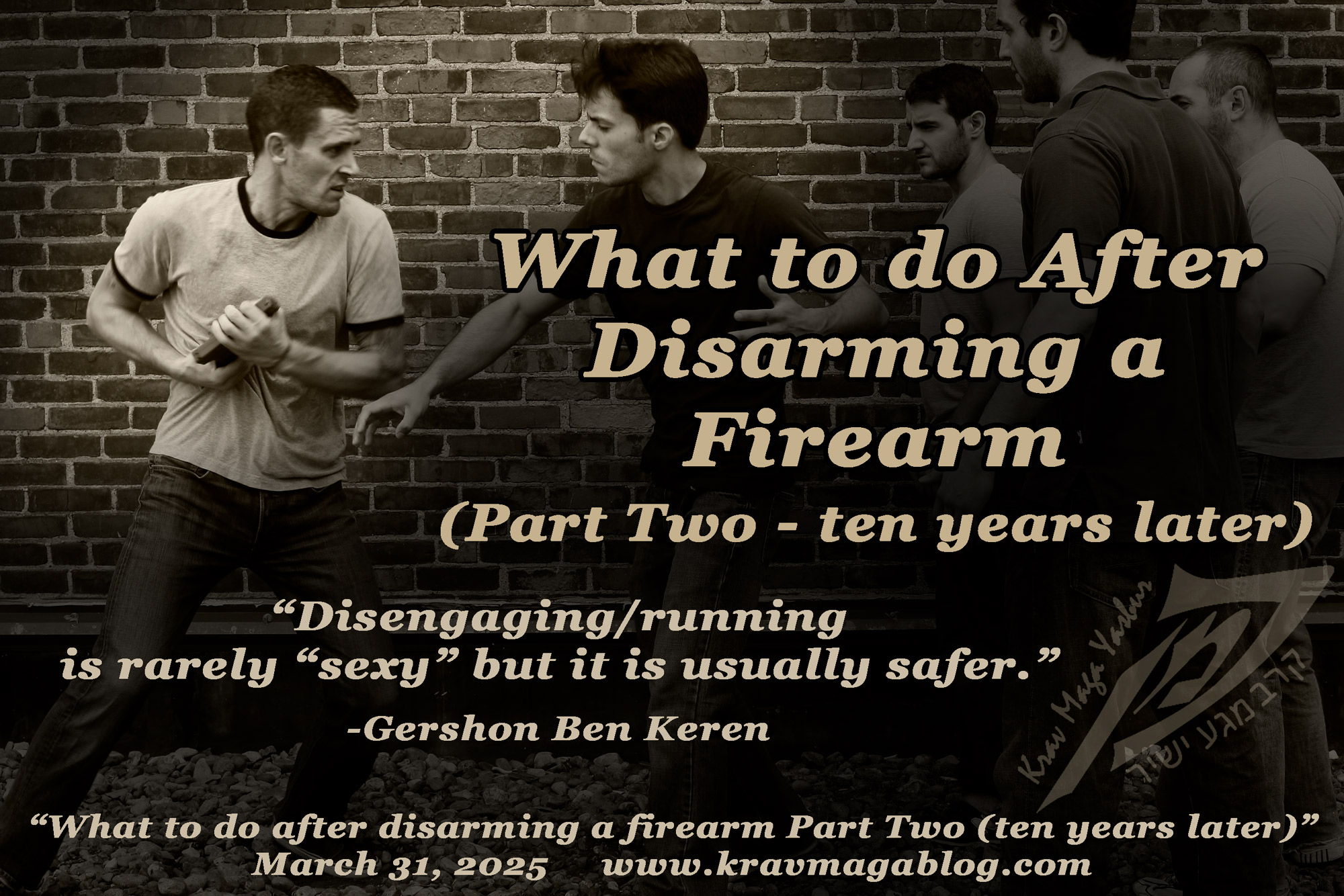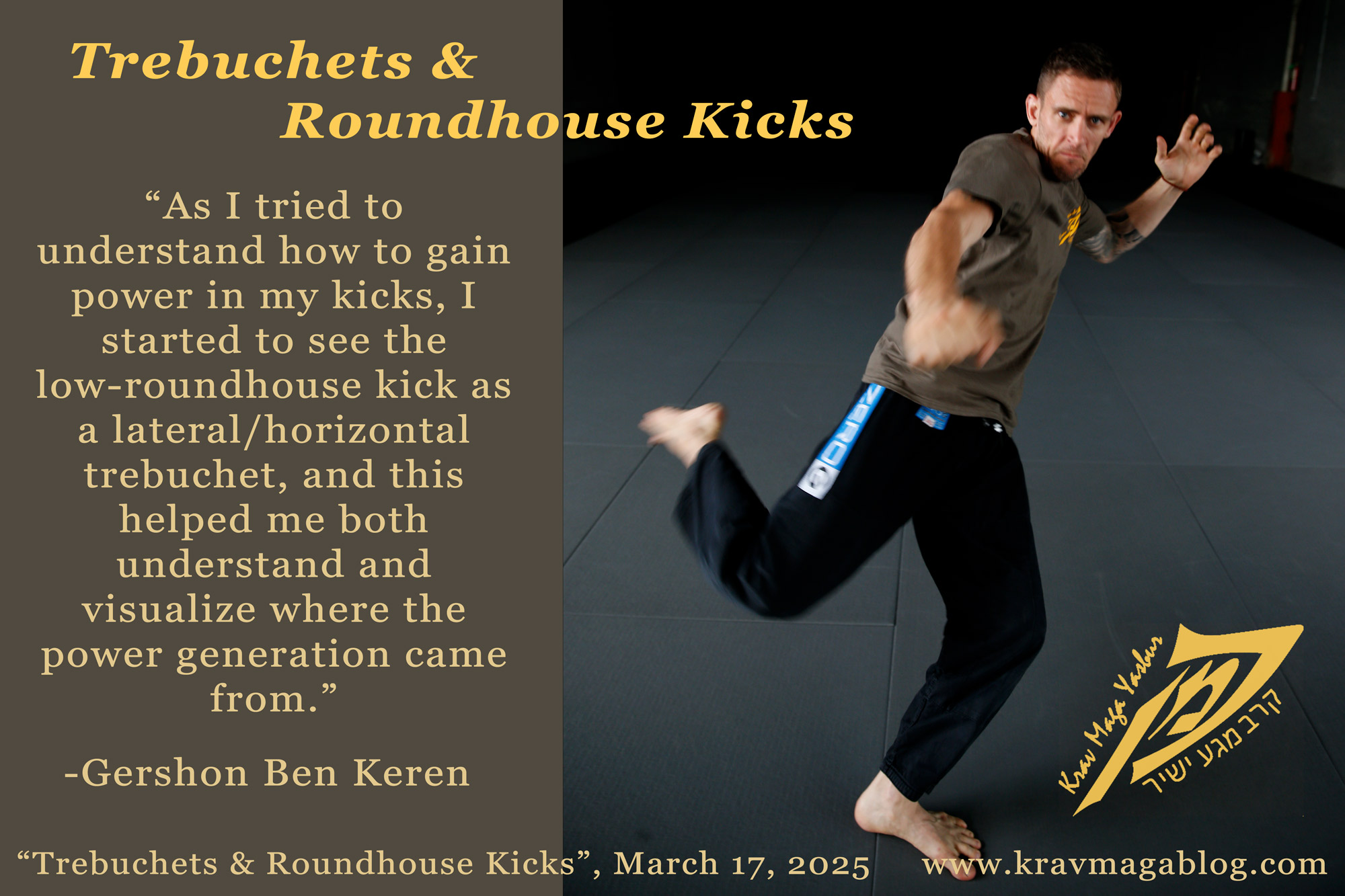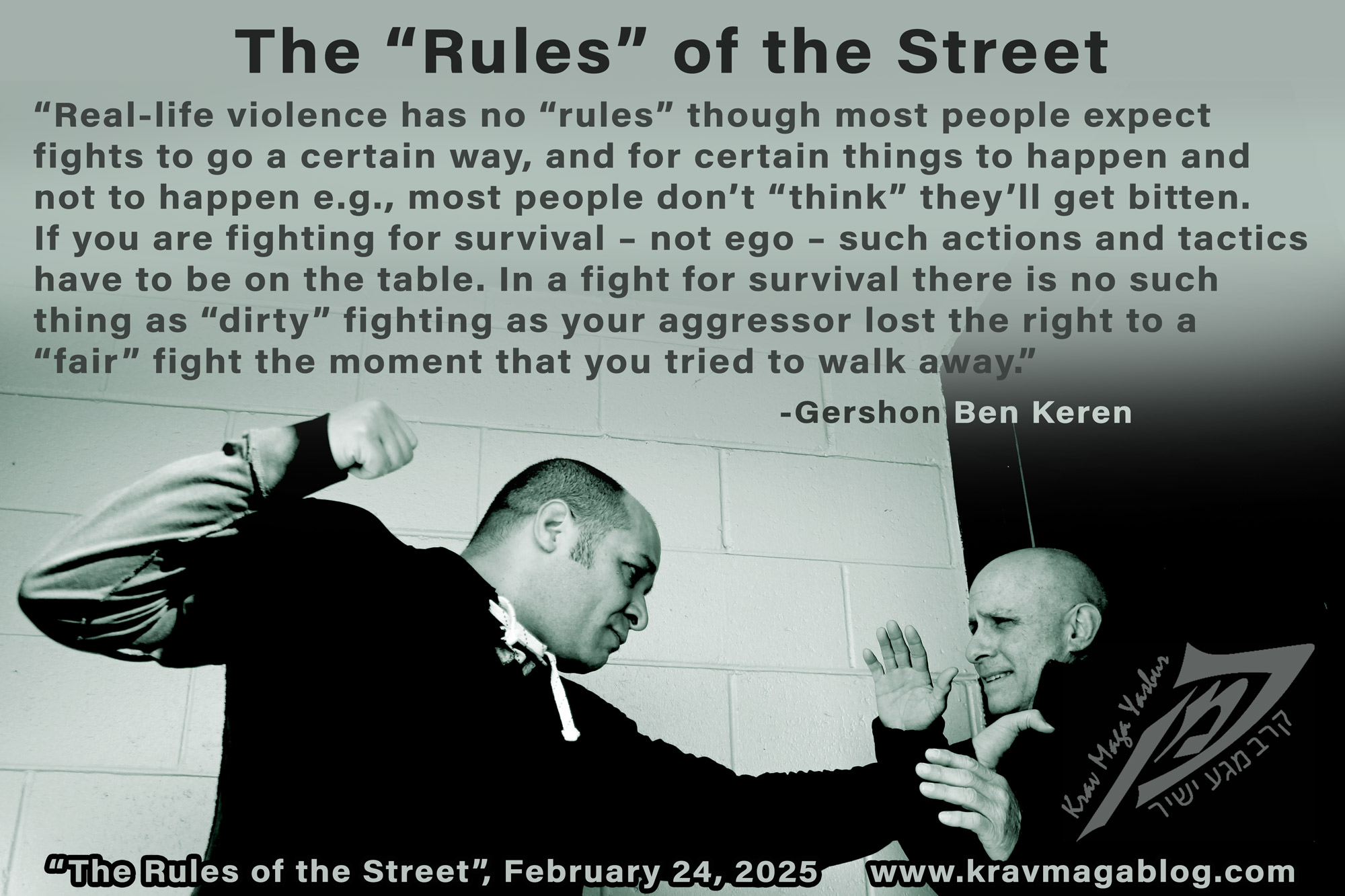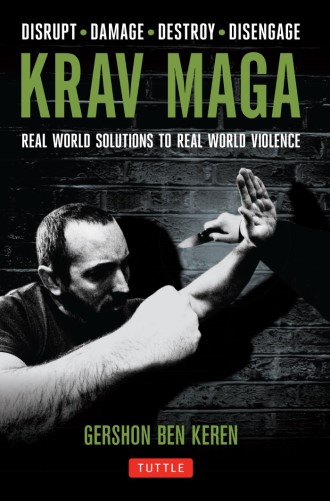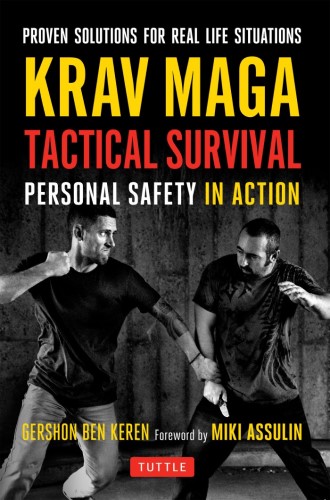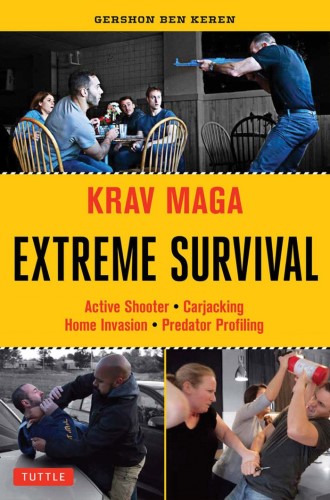Control Of Range, is an article written by Gershon Ben Keren, a 5th Degree Black Belt in Krav Maga, who teaches Krav Maga in Boston, MA. He has also authored three Amazon best-Selling Books on Krav Maga.
I’m a big believer in skills and attributes. I put them ahead of techniques. If you look at a boxer’s toolkit, it is comprised of four basic punches; and yet boxing takes a lifetime to master, because it involves developing the skills and attributes to make those four punches effective. One of the biggest issues I’ve found that boxers, traditional martial artists, MMA practitioners, etc., have with many of those who practice and teach reality-based self-defense, including Krav Maga, is that they lack any real fighting skills; and instead argue that aggression can be used as a substitute for these things. Whilst I believe aggression is a vital component in the mix of reality-based self-defense, it is not a replacement for having solid fighting skills and attributes. In this article, I will aim to demonstrate why one skill – control of range and distance – cannot be substituted, and needs to be developed, even if that means taking training time away from learning techniques.
If you’ve ever been attacked with a knife, there are several things that you’ll have wished for – apart from not being there in the first place. One of these will have been to have had adequate time to react and respond; something that most attackers will deny you. If an attacker has done their job properly, you’ll not initially see the knife, or you will only pick up on the movement of the weapon – not necessarily the weapon itself – at the very last moment. The chances of making a strong block are not good, and making a simultaneous attack will be almost impossible. To have a chance of making these defenses, you will first have had to accomplished two things: you must have been able to pick up on the pre-violence indicators that warn you that an attack is imminent, and you will have had to control range and distance, giving you the time to react and respond. It doesn’t matter what your level of aggression is, you can’t substitute it for these two skills. Threat identification, effective decision-making, and control of range are necessary attributes for dealing with a knife attack, as well as many other types of assaults.
A good control of range will also limit the effect of a stab that you fail to block – and no blocking system is perfect. A friend of mine who I used to train with in London, was a forensic scientist, who worked for the London Metropolitan Police Service. He told me that for most stab wounds to be fatal, they must cut to a depth of about 2 inches (despite the fact that he told me this over 10 years ago, I’m pretty sure it still holds true today) – obviously this is a statistical truth, and there are many variables at play e.g. if the knife cuts a major artery, etc., however, if we can limit the depth of a cut, we increase our survival chances significantly, and one way to do this is to be further away i.e. control the range. Another way to limit the depth of the cut is to blade your body, so that your torso is angled away from the knife i.e. if your attacker is holding the weapon in their right hand, you should stand with your right foot forward, and your left back, so that your body is slanted away from the knife. This may only give you a few more inches of distance, but it may be these that limit the effect of a stab wound if you are cut. By controlling range, and appropriately angling your body, you will limit the effects of a stab, if you fail to block the attack in time. Once again, if you fail to identify the pre-violence indicators that precede the attack, both of these things will be hard to do once the attack is under way (most knife attacks involve the attacker moving forward, as they stab, making range control very difficult once the attack has started).
Just as the effects of a stab can be limited by range control, so can the effects of a punch. If you are extremely close to an aggressor when they throw a punch, you may not have enough time to react and block it – action beats reaction. At close range, the punch will have driving force, as the attacker will be able to punch through the target; whereas with distance they’ll only be able to punch at it. You should aim to, but not expect to, block every punch, but a good control of range will mean that those which do reach you will be limited as to the amount of force they can deliver.
A good control of range also means that an attacker will have to commit their body to the attack i.e. they will need to move and shift their weight towards you, rather than just swing an arm out to cut, stab, punch, or grab you. Transference of weight, means that to attack or move again, they will need to re-transfer weight, first. This will interrupt the speed at which they can make attacks. Imagine that an attacker, to throw a punch, must take a large step forward in order to reach you. Their weight will now be fully loaded on to the front leg. To make another attack, they will have to unload some of this weight first, so that they are able to move. This “interruption” is one that you can take advantage of – either to disengage, to get yourself into a better position to attack, or to make an attack of your own, etc. The shift of weight to the front leg also means that the front leg becomes an effective target for low-kicks; there is no chance for your attacker to “ride” the kick – moving it to limit the effects of the impact – and so all of the force of the kick will be fully absorbed.
To be a comprehensive fighter you need aggression, however there are many fighting skills and attributes that it can’t replace or compensate for. In order to get many techniques to properly work, there need to be skills and attributes behind them. Our training shouldn’t just involve practicing techniques, and aggression drills, it should involve training methods that specifically target skills such as control of range, effective movement, physical co-ordination, balance, etc. For many new students who have not practiced sports and athletics, these are the areas where most of the work needs to be concentrated e.g. if a person is unable to stay balanced when they step under a person’s arm/armpit when practicing an escape from a rear strangle, working on movement and balance will see them progress faster, than simply training the technique over and over again. In our own training, we should identify where our weaknesses are, and put effort into developing the skills that will see us progress.
0 COMMENTS